On a rare restful day at GRT Resource Regeneration, a pair of millwrights pull apart a blown gearbox that has temporarily shut down operations at the company’s plant in Nanaimo, B.C.
The company is one of only two in North America that take dirt and rock from dredging and excavation operations, wash metal and salt contaminants out of it, and turn it into a valuable product.
GRT, which stands for Generating Resources for Tomorrow, makes money by turning waste material into clean aggregate rock, sand or clay for new projects. Meaning instead of filling up a landfill, excess soil is being rebirthed as something that can be used in landscaping, shore protection or dike construction.
Construction waste is a global concern as economies shift their focus towards closed-loop processes and decarbonization. According to the Construction Products Association, the United Kingdom produced 138 million tonnes of construction waste in 2018. Nearly 60 million tonnes were excavation material and only half of that was saved from landfill.
According to the U.S. Environmental Protection Agency, the United States produced an estimated 600 million tonnes of construction and demolition waste in 2018.
In Canada, one study estimated that construction and demolition waste accounts for 27 per cent of the municipal solid waste disposed of in landfills. In 2013, Statistics Canada estimated the country was producing about four million tonnes of this type of waste every year.
Zooming in on Vancouver, 372,000 tonnes of construction and demolition waste was dumped into landfills in 2021, according to a study conducted by Dillon Consulting for Metro Vancouver. Sampling found that rubble and soil accounted for 22,729 tonnes of waste, while land clearing produced 14,944 tonnes of waste material.
Meanwhile, GRT’s more than 60 customers, which include federal, provincial and municipal governments, First Nations, and dredging and construction companies across southwestern B.C., pay a per-tonne fee to drop their unwanted rock and dirt at its plant. Then, instead of driving back to their offices with an empty truck, customers can load up with landscaping and building-ready rock, sand and dirt.
The company is diverting 80,000 tonnes of waste material from landfills every year, according to CEO Peter Reid. By 2035, Reid said, that number is expected to hit one million.
“By repurposing this material, we’re also helping to lessen the need to mine for new rock and sand,” Reid said.
GRT was founded in 2019 by a team of chemists and engineers that developed a unique process for treating contaminated IL (industrial) rated material, one of eight soil classifications defined by the province’s Ministry of Environment and Climate Change Strategy. It’s the stuff typically dug up around urban and industrial areas, such as abandoned gas stations, which contains metals like copper and lead and salts like sodium and chlorides in excess of ministry standards.
After perfecting its process, GRT opened a treatment facility in June 2021 on a parcel of vacant industrial land leased by the Nanaimo Port Authority.
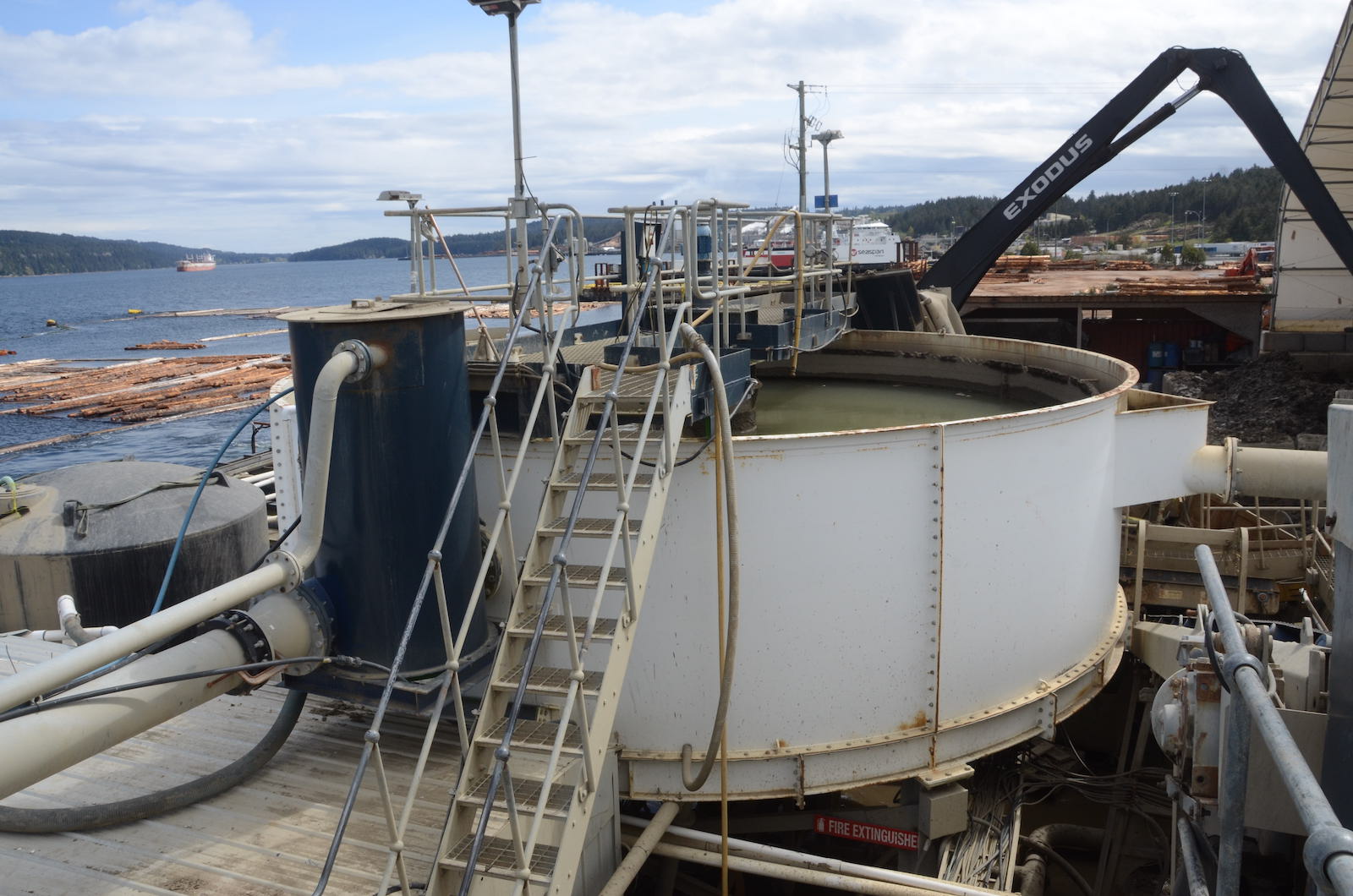
Reid, a Memorial University-trained environmental engineer with decades of experience working globally on construction projects, joined the company in 2020. He said he was “enamoured” by its elegant solution to the immense issue of contaminated rock and dirt waste in construction.
Digging, trucking and disposing of this waste accounts for between 15 and 20 per cent of project costs, Reid said. Ideally, he added, all of it would be treated and upcycled.
GRT has grown quickly since launching. The company now employs 38 full-time employees, including a half-dozen members of the Snuneymuxw First Nation.
“Prior to opening, we reached out to the Snuneymuxw to tell them what we were doing and we have an agreement to post job openings to the nation first,” Reid said.
Plant capacity has doubled since 2021. GRT now processes 40 tonnes of material per hour, seven days a week. The company also has room to stockpile 30,000 tonnes of material in its expanded sorting bays.
According to Reid, GRT cleans about 95 per cent of the material it receives and any residual is trucked to the landfill.
“We know seven days in advance what trucks are bringing in. Every load needs to be certified and identified by the customer, so we know what’s in it,” Reid explained.
After treating the contaminated material, Reid said, a sample of every load is sent by float plane to a third-party chemical analysis lab in Vancouver.
“If our customers want to know what’s in our products, we can show them the analysis,” he said.
Promoting a circular economy is at the heart of GRT’s operations, according to Deanna Woods, director of engagement at GRT. But to attract customers with its cause, affordability is key.
“Our pricing is competitive with landfills. This is the most important factor for us in winning business,” said Woods.
“That said, most of our regular customers, local municipalities, for example, also find the sustainability aspect compelling.”
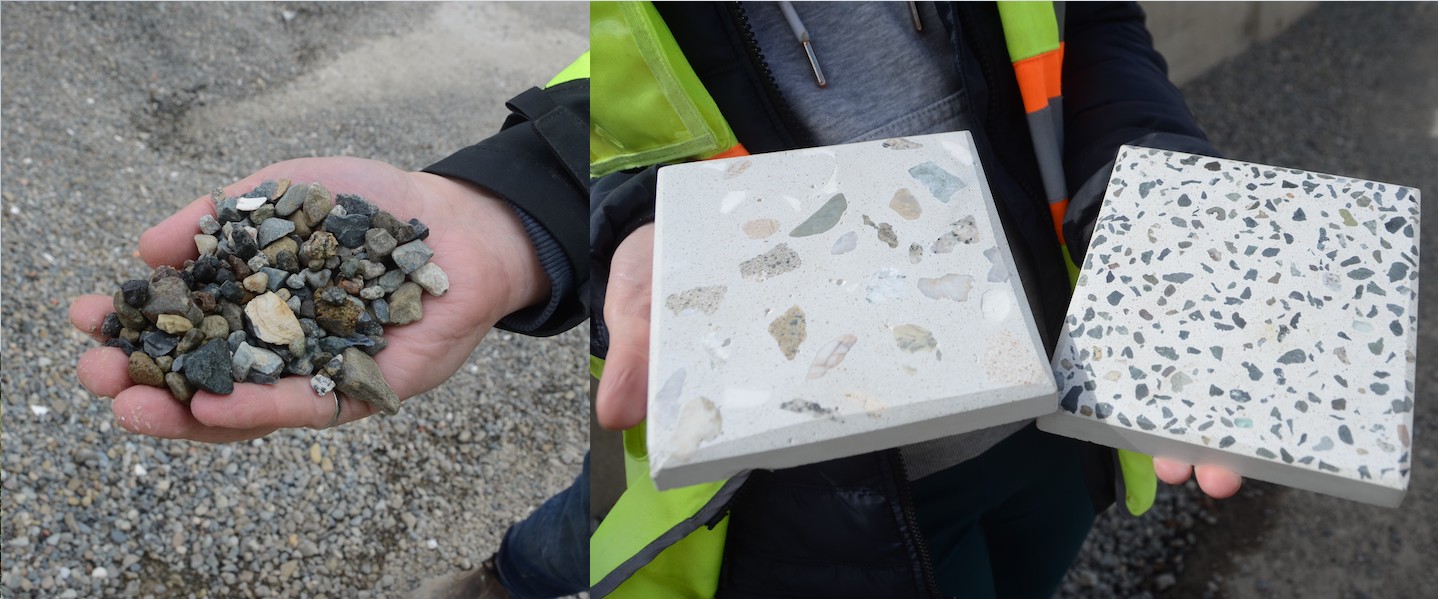
The company currently retails six products made from decontaminated material under the brand Regenerock. They include clay that can be used to build impermeable dikes, C-33 sand for making concrete or asphalt, and four different sizes of aggregate rock for perimeter drain, landscaping and other applications.
A positive environmental impact is something GRT prides itself on. To put this to the test, the company recently measured its impact through Quebec’s Enviro-access, a non-profit that specializes in quantifying greenhouse gas emissions. According to its 2024 audit, GRT saves nearly 2,200 tonnes of carbon dioxide annually, which is equivalent to removing 475 cars from the road. Simultaneously, it stops roughly 2,800 kilograms of pollutants like nitrous oxide, carbon monoxide and non-methane volatile organic compounds from entering the atmosphere.
Its dirt-cleaning efforts haven’t gone unnoticed. In 2023, GRT won the Synergy Foundation’s Ecostar Award in the design and construction category. Prior to that, GRT made Foresight Canada’s list of the 50 most investable clean-tech companies in 2021 and 2022.
The GRT yard in Nanaimo looks like any other waterfront industrial site. It’s a lean operation, where a small trailer serves as an on-site office. For the most part, GRT’s administrative, executive and technical staff work remotely, an enduring organizational structure thanks to the company’s mid-COVID launch. There’s a slip for barges filled with dredging material, a scale and bays where incoming material is dumped and roughly sorted depending upon the impurities it contains.
An excavator then feeds buckets of the material into a process that further sorts and washes the material of impurities. That water is then treated and reused through what Reid calls “a closed-loop process.”
GRT doesn’t have a patent on this process because the technology it uses is borrowed and retrofitted from existing mining and wastewater treatment technology.
“Our [intellectual property] is in the process,” Woods said.
Recently the company added a centrifuge to its system to improve treatment of very fine, silty material. GRT engineers sourced the device, previously used to process canola oil in Alberta, second-hand and adapted it to fit their system.
Over the years, GRT staff have found some fascinating treasures through their work, such as an antique boatswain’s whistle submerged in sand and mud dredged from Esquimalt Harbour. Staff have also worked closely with archeologists conducting surveys of construction material, sifting through dirt and rock for Indigenous artifacts before the material is treated and decontaminated.
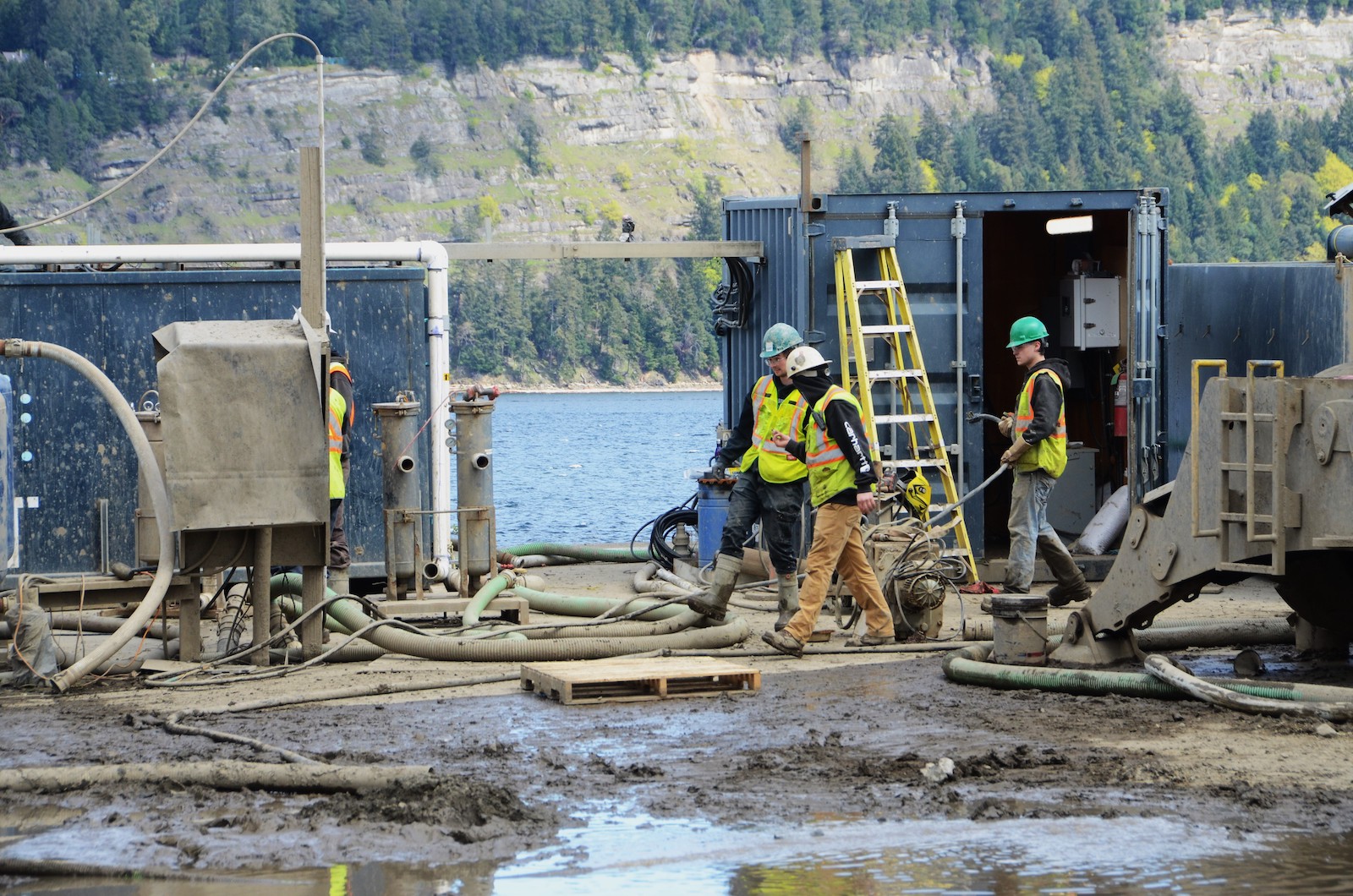
Dean Wason, GRT’s plant manager, brought 20 years of experience running concrete plants in Fort McMurray to his job on the West Coast.
“It’s a lot more fulfilling than making concrete for the oilsands,” Wason said. “It feels like we’re doing the right thing.”
The potential for GRT’s cleaning technology is huge. In B.C. alone, the provincial Environment Ministry currently lists 8,000 contaminated sites in its records.
Together with the excess dirt and rock produced by the construction sector, there’s a seemingly limitless supply of material to feed GRT’s plant. As land for new urban garbage dumps is expensive and hard to come by, the incentives to employ GRT’s services are growing.
“Nobody wants a new landfill in their backyard,” said Ben Routledge, manager of solid waste services for the Regional District of Nanaimo.
At Nanaimo Regional Landfill, there are 1.3 million cubic metres of airspace — the unit used to measure landfill capacity — remaining. That translates to 25 more years of dumping.
That’s why extending the life of existing infrastructure — through methods like waste diversion — is the primary focus for landfill managers like Routledge.
Looking ahead a few decades, Nanaimo has a handful of options. It could start the tough search for a new landfill location. However, Routledge said doing so comes at a huge economic, social, environmental and political cost. Nanaimo could follow in the footsteps of Cowichan Valley Regional District, and truck, barge and train its garbage more than 500 kilometres to a landfill in Washington state. But Routledge said this option is also a non-starter; it would double the cost of solid waste management, and that’s before factoring in the environmental cost of transportation-generated greenhouse gas emissions.
So, instead of finding a new home for its trash, this leaves the regional district to rely upon its third option: double down on waste diversion.
In its updated 2019 regional solid waste management plan, Nanaimo set an ambitious target of 90 per cent waste diversion by 2029. The aim is to build upon momentum that led to an annual drop in its per capita waste production from 550 kilograms in 1990 to 347 kilograms in 2016. The regional district also wants to expand its efforts to minimize construction and demolition waste, and build on existing disposal bans for cardboard, gypsum, metal and wood.
Routledge told The Tyee he considers himself lucky to have a company like GRT in his “backyard.”
“If we don’t have to use up airspace with dirt and rock and extend the life of our landfill, that’s huge,” Routledge said.
GRT’s products can also be bought by the regional district to enhance their existing landfill. Its upcycled aggregate rock can be used to build roads in the landfill and its clay can help create impermeable layers in the landfill that will prevent the leaching of toxins into surrounding watersheds.
“It would be a lot more expensive to buy this clay on the open market,” Routledge said.
After a day of wrenching the busted gearbox, the millwrights have GRT’s plant back up and running at full capacity.
On the horizon, Reid said, GRT has plans to expand to a second plant on the mainland. He wouldn’t provide further details other than to say the company is doing its due diligence scouting a potential location. While demand for their services is not an issue, available industrial land is proving to be a limiting factor.
As in other growing metropolises around the world, the focus on Lower Mainland development is urban densification and infill. As developers continue to build up instead of out, bigger holes for car parks and other below-grade infrastructure are being dug. Bigger holes mean more dirt and rock.
“It’s our belief that none of this material should end up in a landfill,” Reid said.
This article runs in a new section of The Tyee called ‘What Works: The Business of a Healthy Bioregion,’ where you’ll find profiles of people creating the low-carbon, sustainable economy we need from Alaska to California. Find out more about this project and its funders. ![]()
Read more: Local Economy, Environment



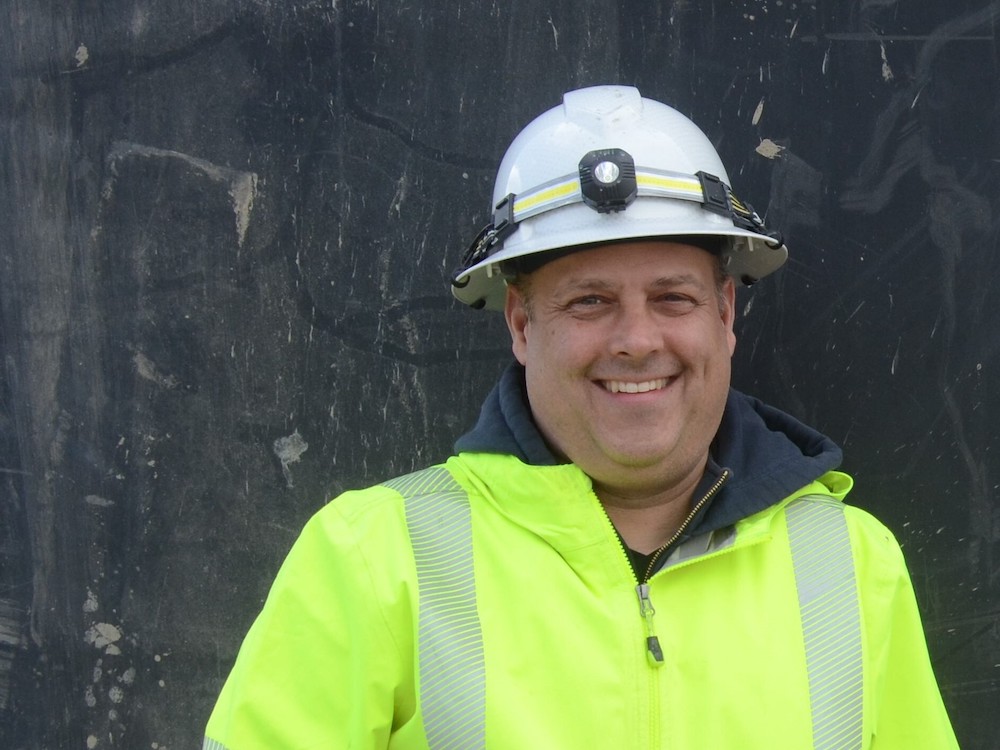





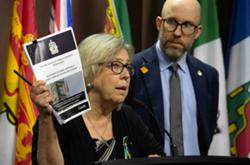

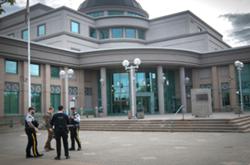

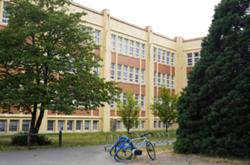


Tyee Commenting Guidelines
Comments that violate guidelines risk being deleted, and violations may result in a temporary or permanent user ban. Maintain the spirit of good conversation to stay in the discussion and be patient with moderators. Comments are reviewed regularly but not in real time.
Do:
Do not: